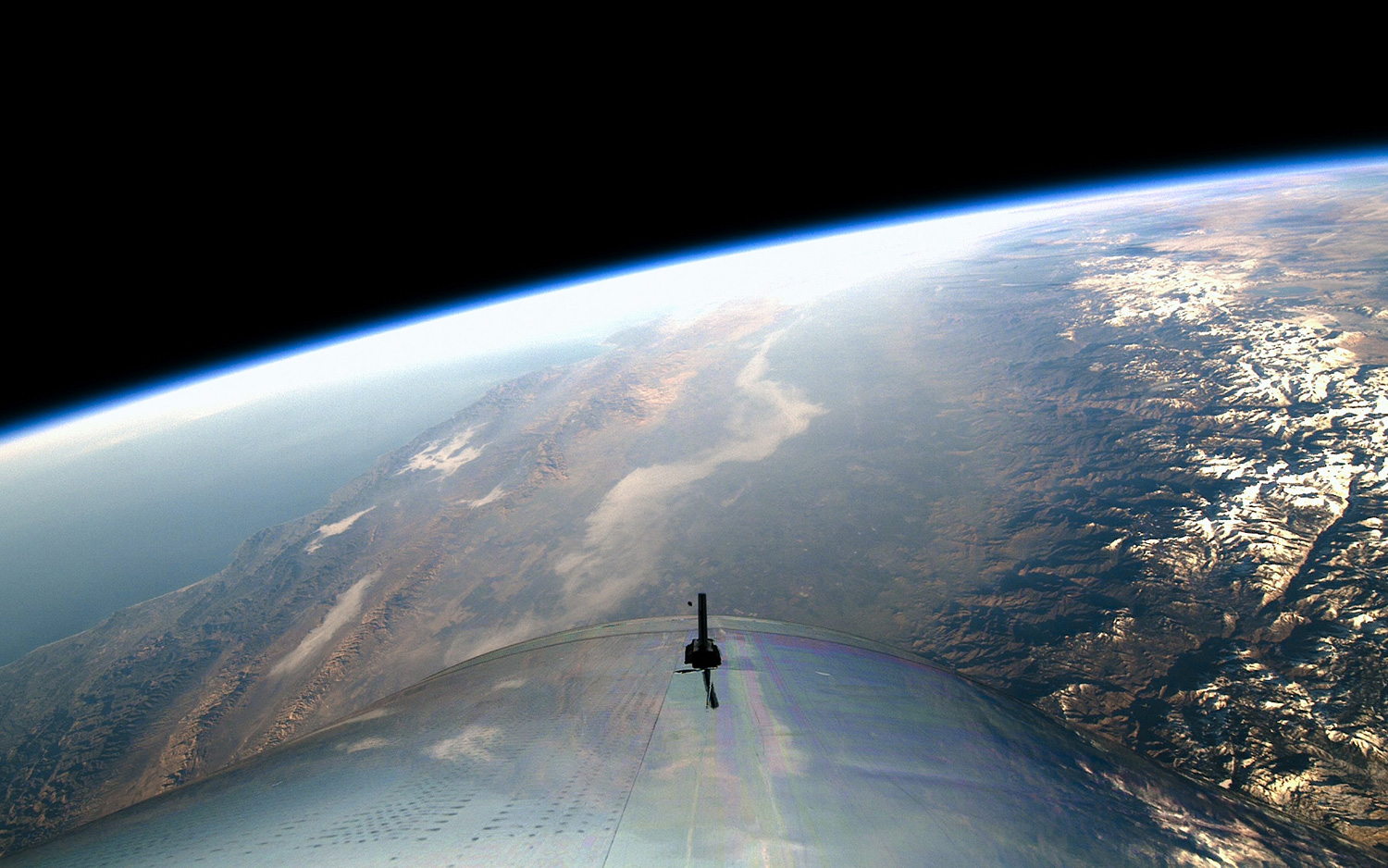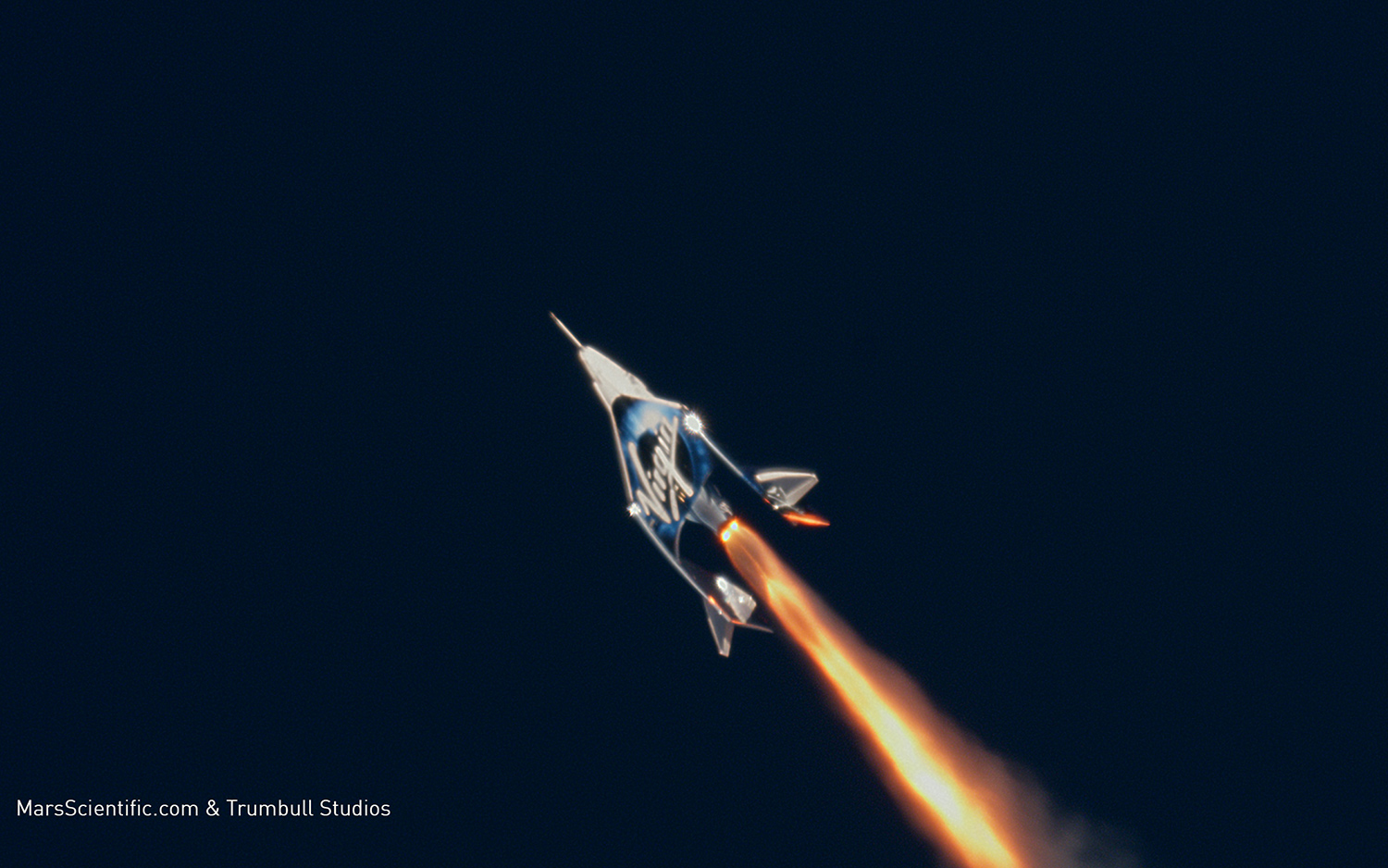Virgin Galactic's Historic Space Trip Heralds a Coming Age of New US Human Spaceflight Leaps
Virgin Galactic just brought human spaceflight back to American soil after a seven-year hiatus, and other private companies are poised to make some giant leaps of their own.
Virgin's VSS Unity suborbital spaceliner soared to a maximum altitude of 51.4 miles (82.7 kilometers) during a rocket-powered test flight over California's Mojave Desert yesterday (Dec. 13).
The milestone marked the first U.S.-based crewed trip to the final frontier since NASA grounded its space shuttle fleet in July 2011. And it was the first spaceflight ever by a private vehicle designed to carry commercial passengers. (By one measure, anyway: Though many people place the boundary of outer space 62 miles, or 100 km, up at the "Karman Line," the U.S. Air Force awards astronaut wings to personnel who reach an altitude of 50 miles, or 80 km.) [In Photos: Virgin Galactic's SpaceShipTwo Unity Soars to Space]
"Today, we have shown that Virgin Galactic really can open space to change the world for good," Virgin Galactic founder Sir Richard Branson said in a postflight statement yesterday.

"We will now push on with the remaining portion of our flight test program, which will see the rocket motor burn for longer and VSS Unity fly still faster and higher towards giving thousands of private astronauts an experience which provides a new, planetary perspective to our relationship with the Earth and the cosmos," he added. "This is a momentous day, and I could not be more proud of our teams who together have opened a new chapter of space exploration."
VSS Unity is designed to carry six passengers, two pilots and scientific experiments on brief trips to suborbital space. Virgin Galactic is selling seats on the vehicle for $250,000 apiece.
Yesterday's flight carried no passengers, just pilot Mark Stucky and co-pilot Frederick "C.J." Sturckow. But, given the mission's success, the first commercial flights of VSS Unity may be coming quite soon. And don't be surprised if another company officially gets into the space-tourism business at about the same time as Virgin.
Get the Space.com Newsletter
Breaking space news, the latest updates on rocket launches, skywatching events and more!
Blue Origin, the spaceflight company run by Amazon.com founder Jeff Bezos, is developing its own reusable suborbital system called New Shepard, which has already aced multiple uncrewed test flights. Blue Origin plans to start selling tickets to ride New Shepard next year, company representatives have said (though they have yet to disclose the price).

And then there's orbital spaceflight. Two other American companies, SpaceX and Boeing, hold multibillion-dollar NASA contracts to fly astronauts to and from the International Space Station (ISS). SpaceX will use its Falcon 9 rocket and Crew Dragon capsule, while Boeing will do the job with its CST-100 Starliner capsule and United Launch Alliance (ULA) Atlas V rockets. [Crew Dragon and Starliner: A Look at the Upcoming Astronaut Taxis]
Crew Dragon is scheduled to launch on its first uncrewed test mission to the ISS on Jan. 17, and Starliner should do the same in March, if current schedules hold. If everything goes well on those flights, SpaceX will fly a crewed test mission to the orbiting lab in June, and Boeing will follow with a similar flight in August.
Bringing these two vehicles fully into service will be a very big deal: For the past 7.5 years, NASA and all other space agencies have been dependent on Russian Soyuz spacecraft and rockets to ferry their astronauts to and from orbit. So, a serious issue with a Soyuz could theoretically cut off access to the ISS for long stretches, until the problem gets identified and fixed.
Indeed, NASA, Russia and other ISS partners grappled with the possibility of a lengthy stand-down earlier this fall, after a Soyuz rocket malfunctioned during a crew launch to the orbiting lab.
These fears didn't come to pass, of course. The passengers on that Oct. 11 flight, NASA's Nick Hague and cosmonaut Alexey Ovchinin, made a safe emergency landing on the steppes of Kazakhstan about 20 minutes after liftoff. The cause of the anomaly was quickly traced to a bent sensor on one of the rocket's strap-on boosters, and the Soyuz returned to crewed flight with a picture-perfect launch toward the ISS on Dec. 3.
NASA is developing its own crewed spaceflight system, which is designed to help astronauts get to the moon, Mars and other deep-space destinations. The key pieces are the Orion capsule and a gigantic new rocket called the Space Launch System (SLS).
Orion already has one uncrewed test flight under its belt, a quick mission to Earth orbit in December 2014. But the SLS has yet to lift off, and it won't get its wings for another 18 months at least. The rocket's first test flight, known as Exploration Mission-1 (EM-1), is currently scheduled for June 2020. On that flight, the SLS will send an uncrewed Orion on a three-week journey around the moon. (Orion's December 2014 flight, by the way, employed a ULA Delta IV Heavy rocket.)
The first crewed Orion-SLS flight, the lunar flyby effort EM-2, is currently scheduled for 2023.
NASA envisions Orion, SLS and a planned moon-orbiting space station called Lunar Gateway helping agency astronauts get to the lunar surface by the end of the 2020s, and on to Mars a decade or so later. But the agency isn't the only organization working seriously toward deep-space human exploration.
SpaceX is developing a giant, reusable rocket-spaceship combo called "Super Heavy" and "Starship" (formerly "BFR" and "BFS," which were short for "Big Falcon Rocket" and "Big Falcon Spaceship"). This transportation architecture could fly its first passengers to Mars in the 2020s if everything goes well, SpaceX founder and CEO Elon Musk has said.
Musk's overall goal is to help set up a self-sustaining settlement on the Red Planet. Indeed, that has been his ambition for decades; Musk has repeatedly said that he founded SpaceX in 2002 primarily to help make humanity a multiplanet species.
Bezos and Blue Origin have a similar long-term objective; company representatives have repeatedly said the company aims to help get millions of people living and working in space.
Mike Wall's book about the search for alien life, "Out There" (Grand Central Publishing, 2018; illustrated by Karl Tate) is out now. Follow him on Twitter @michaeldwall. Follow us @Spacedotcom or Facebook. Originally published on Space.com.
Join our Space Forums to keep talking space on the latest missions, night sky and more! And if you have a news tip, correction or comment, let us know at: community@space.com.

Michael Wall is a Senior Space Writer with Space.com and joined the team in 2010. He primarily covers exoplanets, spaceflight and military space, but has been known to dabble in the space art beat. His book about the search for alien life, "Out There," was published on Nov. 13, 2018. Before becoming a science writer, Michael worked as a herpetologist and wildlife biologist. He has a Ph.D. in evolutionary biology from the University of Sydney, Australia, a bachelor's degree from the University of Arizona, and a graduate certificate in science writing from the University of California, Santa Cruz. To find out what his latest project is, you can follow Michael on Twitter.









